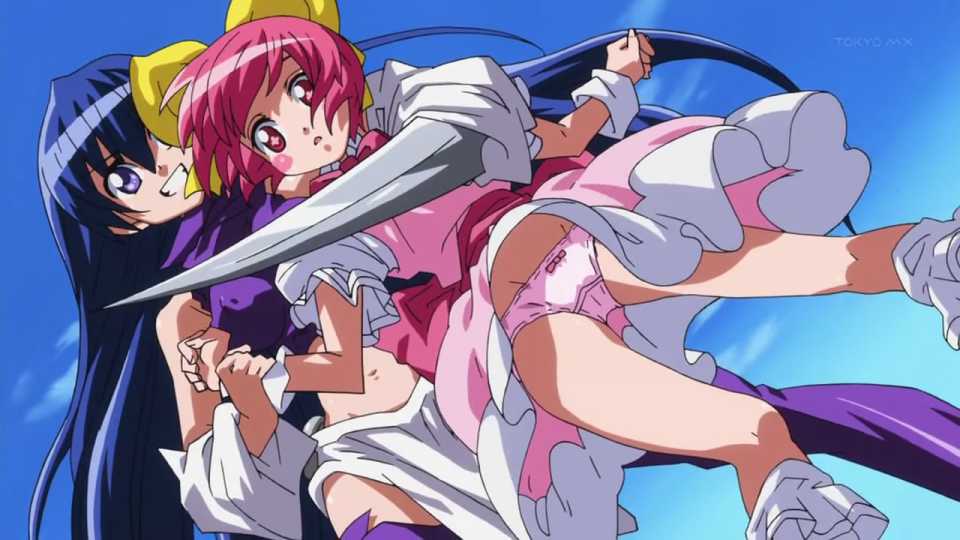Time waits for no-one.
By Fallen189 10 Comments
La jetée is a shortfilm by filmmaker Chris Marker, and tells the story of a science fiction future in which a man travels through time, to explore the concepts and workings of time travel. It sounds easy enough, and for the most part, the narrative works. The way the movie portrays time is effective, if not somewhat primitive seeming in the modern day. For all intents and purposes, the film is a narrated slideshow, in which Marker simply shows multiple still images, albeit masterfully narrates the film with a superb narrative, in which “The man” concludes his travels with going back to his childhood, to a vivid memory of a woman, who he obssesses over throughout, yet cannot remember who she is or why he’s obssessed. The narrative concludes with the realisation that the memory he kept for so long, was actually his death, in a seemingly paradoxical ending.
Movies construct their view of time through several ways. They can throw in red herrings, bizarre plot points (Terminator, I’m looking at your franchise…) or simply just use phenomenal narrative through flashbacks(Think Usual Suspects, a small pocket in time recollected through the present).
However, films aren’t necessarily the best, nor only way in which the concept of time can be identified as a narrative plot.
The Girl Who Lept Through Time is a 2006 sci-fi anime directed by Mamoru Hosoda, and inspired by the book Toki o Kakeru Shōjo (時をかける少女, “The Girl Who Dashes Through Time”). The use of time is the key plotpoint, vital to the narrative. The film focuses on a young girl called Makoto, who discovers that she can suddenly leap through time, avoiding a fatal train accident. At the beginning, she uses the jumps frivolously, until she realises she can only skip time a certain number of times. As is common in all timetravel narrative, the idea that “Because she changed something in the past, something drastic will have changed in the future, no matter how trivial the action” (To be examined deeper further on) rears its head, as she desperately tries to go back and correct everything she can, in order to restore some semblence of equilibrium. However, in doing this, she unintentionally changes the future in a horrific way. The train accident she was supposed to die in happens to her friend, and his girlfriend, killing them both. Or so we are lead to believe.
It turns out that Chiaki, the boy who confesses to her earlier on is actually a timetraveller, who came back simply to see a painting which doesn’t make it into his future. However, because he stops time to tell Makoto her actions, and how he uses his last jump to save her friends, he “dissapears”. However, THIS ACTION restores a jump to Makoto, who then goes to find him when she first gets the powers, explains what happened, and wraps up the narrative with a nice little love story, in which she explains she will “always keep running to the future, to find him”
This construction of time differs from La Jeteé in the way that it seems somewhat more…contrived. However, it does show a great difference in the semantics of how time is used as a narrative plot point. Whereas La Jeteé shows a much more dystopic view of the future, in which a man is forcefully sent back through time simply because he’s the only one who can survive the harrowing event, Makoto simply chooses to jump for her own benefits, initially.
In essence, it boils down to 2 ideas:
1) The idea of time-travel as a necessity, for science, and in a narrative sense, depict several different artistic varients in one short burst.
2)The idea that time-travel is exciting. It can be used for fun, however, often with dire rammifications. See TGWLTT or that horror special of the Simpsons where Homer sneezes on a T-Rex.
Animé often gets the pass, however, simply due to its lineage and ideologies. Audiences will often brush off the idea of serious issues and plotpoints in animation because “It’s just dem chinese cartoons for kids and future sex offenders eh”.

However, I digress. This isn’t intended as a discussion on the depravity of animé fans or how far the idea of quality has fallen (YET).
The final way in which time can be created is through videogames, and the most examplary one I can think of in this regard is the Lucasarts classic-
“ Maniac Mansion-The Day of the Tentacle” (Yeah, I’m talking about 2d classic point and click adventure gamesAGAIN)
Consider how DOTT uses time travel in a somewhat revolutionary way. The basic idea of the game is that you play several characters scattered throughout time, wheras you eventually gain the ability to swap between them. The puzzles include several ingenius plot points and frankly, awesome ideas.
Some of the more entertaining puzzles of the game involve these characters. In one sequence, Hoagie must give an exploding cigar to Washington in order to replace his famous false teeth with chattering novelty mechanical dentures, while in another he gives a drawing of a tentacle to Ross, who sews it into the American flag. In another scene, in order to coax Washington into chopping down a kumquat tree, Hoagie must paint the fruits red, as Washington insists that he only chops down cherry trees, referring to a legend concerning Washington’s youth.
The idea of the game is that a purple tentacle has gone back in time to change the past, making it easy for him(them) to take over the future. Videogames as a medium can use this in several engaging, and often interactive ways. Take this example of how the game uses time as a poignant idea:
What’s most splendid about this is just how intuitive it is in its absence of logic. The hamster, once defrosted, is very cold. So to warm it up, why not use a jumper from the present day? But not only would it get soggy if flushed forward, but it’s far too big for a hamster – let alone that it’s stuck under a very heavy sleeping man.
Once retrieved the most obvious course of action is to put it into a tumble dryer with enough quarters stuffed into the coin slot to keep it drying for the next 200 years. The punchline, as you walk Laverne into the mysteriously preserved laundry room, is wonderful. As you walk through the door – DING! – it’s finished. And of course hamster-sized.
I can’t think of another way in which the apparent lack of logic would come together in such a fantastic and intuitive way. Films, Animé, books-They’re all fine, as a static medium. Things will always happen in a specific way, a predetermined, unchangeable path in which the viewer passively observes. However, with games, more specifically DOTT, the way in which the interactive nature forces the player to consider several variants within really shows the way in which time, throughout mediums, can be used as a powerful, fun, and frankly brilliant way. More things should use timetravel.
Except Darkest of Days!
How do you, the users feel about time travel in a medium? Do you agree or disagree with any point I have made? Do you feel games often do it well? Would you like to see better variations of it? What would your ideal timetravelling game feature? (And yes, you can just say "DOTT Remake by Telltale" (I Will allow that)
